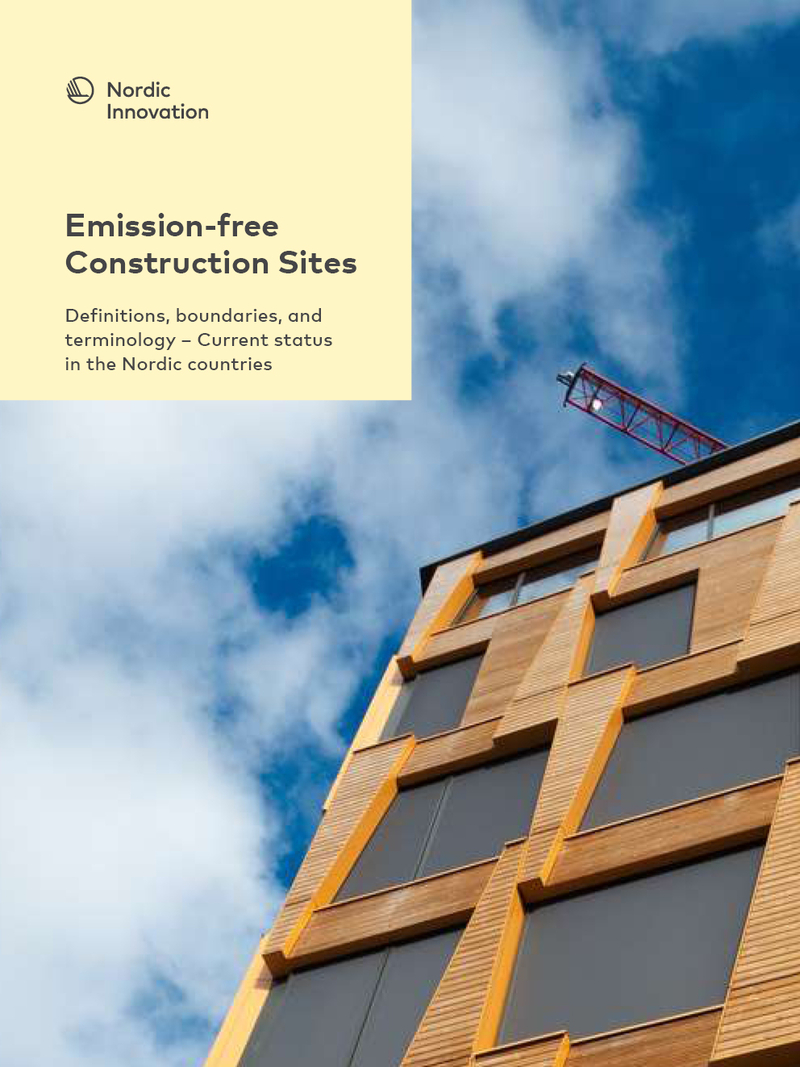Emission-free Construction Sites
Definitions, boundaries, and terminology – Current status in the Nordic countries

Tietoja
Publish date
Abstract
The objective of the Nordics to take the lead in a sustainable and competitive construction and building sector comes with the aspiration to reduce the environmental and climate impact of construction. Key to reaching this objective is working with procurement and sustainable construction requirements. To facilitate this, it is essential to engage the entire value chain and promote new and innovative solutions and business models.The building and construction industry is responsible for an estimated 39% of total energy and process-related greenhouse gas emissions, while the construction of new buildings may represent up to 5% of the total emissions across all sectors. New construction is bound to increase due to growing populations and affluence, which further highlights the need for addressing these emissions.The environmental impact of construction is being addressed in a number of ways. There are legislative and voluntary measures, such as limits on permitted emissions and environmental certifications. Meanwhile, emission-free construction sites, sometimes termed zero-emission construction sites, are emerging as a means to focus on the construction process. Projects aimed at reducing construction emissions generally have different system boundaries and aspirations. Further development in the field would benefit from a unified framework. This can be based on the well-known standards and approaches that are used in life cycle assessments of buildings.During construction, most of the greenhouse gas emissions relate to transport, machinery, and other energy use. Construction waste also contributes to emissions and this should therefore be considered. The use of fossil fuels on construction sites can be replaced by either fossil-free alternatives or emission-free energy carriers. Fossil-free biofuels are already available and can be used in existing machinery fleets. Further development in biofuels and electrofuels can be expected. Emission-free alternatives such as batteries and fuel-cells have the extra advantage of eliminating other airborne pollution. Although battery electric solutions are currently at the forefront of this, hydrogen is expected to be used in long-range applications.Emission-free construction in the Nordic countries has mostly been propelled by way of public procurement. Cities and municipalities have awarded contracts based on environmental award criteria. The results are promising, and a growing number of building projects are implementing emission-free construction sites. The level of ambition ranges from fossil-free machinery to emission-free transport and machinery and the low-emission management of waste.
Publication number
2023:424
Organisation